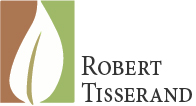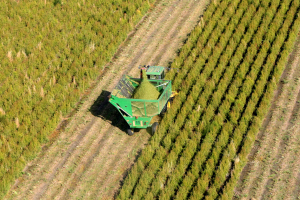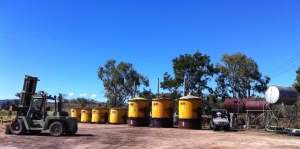I am writing this in response to a recent discussion on various facebook pages about tea tree oil (TTO), and whether a TTO with 51% terpinen-4-ol would be better than one with 41%, or whether 51% suggested adultration. Most TTO is produced in Australia and China, and this article is about the quality of Australian TTO, since the Chinese oils generally do not conform to the Australian standards, and there is no quality standard for Chinese TTO. The major constituent of TTO is terpinen-4-ol (T-4-ol). Most essential oils contain a single major constituent, and yet the main point of natural medicine is that we don’t isolate “active ingredients” and use them instead of the whole natural product.
Once we do that, we call it a drug. And, once we do that there is no longer any possibility for synergistic action. Synergy is the interplay, or interaction between constituents of plant-based medicines, that often give them effects that cannot be obtained by using a single, isolated substance. The action of TTO owes a great deal to its content of T-4-ol, and there may be instances when T-4-ol alone is more effective. But there are certainly situations in which the whole oil is more effective. So the question here is this: What is the ideal amount of T-4-ol, and is more always better?
There is an industry standard for TTO, and the most recent version was published in 2004. Standards for essential oils are set by the International Organization for Standardization (ISO). The actual ISO standard is copyrighted and is not in the public domain, but for the purposes of this discussion all we need to know is that the standard for T-4-ol in TTO is 30-48%. This means that any genuine, natural, unadulterated TTO should contain a minimum of 30% and a maximum of 48% T-4-ol. (For anyone who wants to better understand the way a standard can help identify if TTO is genuine there is a document on the ATTIA (Australian Tea Tree Industry Association) website: How ISO & AS Standards help identify fraudulent material.) I asked Tony Larkman, spokesperson for ATTIA, whether a TTO with more than 48% T-4-ol was a good thing or a bad thing. This is his response:
They put a ceiling on the T-4-ol to stop the bush cutters (who were distilling wild harvested material in wood fired pot stills) from cheating – it is easy to use the wrong source plant material “by mistake”; back then it was all done by smelling the product and paying cash based on the buyers skill at detecting the cheats followed by CG analysis when they got back to base some weeks later. One sample had 47% so they made the standard inclusive at 48%. The 30% minimum was put there to stop them cheating the other way by diluting with some of the eucalyptus and other oils (including turpentine form the hardware store!).
I spoke to the technician from the Australian Government’s Department of Primary Industry (DPI) essential oil testing facility at Wollongbar, NSW last week asking him what the highest level of T-4-ol he had ever seen in his 15+ years experience as an analytical chemist in a sample of pure Australian TTO. His response: Under a proper distillation regime 42% T-4-ol result is very high and rarely does one see 43% T-4-ol. It is extremely rare to see 45%. I once had a 47% T-4-ol result only to find after a double check from another sample from the same batch that it was a fault in the calibration of the GC unit.
I have never seen a T-4-ol level in pure TTO to exceed 45%, neither has the analyst from the DPI. When I see the T-4-ol level over 42% I immediately submit it for a chiral test on the assumption that it has been adulterated with T-4-ol which is a waste product from factories that ‘correct’ eucalyptus, sandalwood, tarragon, pine, fennel and aniseed oils. It is also found in turpentine. I would personally like to see the max level dropped to 45%.
It is a myth that higher levels of T-4-ol make TTO more effective. All studies on the efficacy, safety and usage of pure Australian TTO have been conducted using a T-4-ol content of about 40–42%, the level at which it most commonly occurs in plantation sourced oils which have been bred to yield at this level. Australian TTO is a complex mixture of 113+ compounds and it is the synergistic effect of all of these compounds that makes TTO such an effective antibacterial, antifungal and anti-inflammatory product.
Since the mid 1980s there have been many discussions about the optimal levels of T-4-ol and 1,8-cineole in TTO. The fact is that increasing T-4-ol levels above 40% makes no difference to the safety and most importantly the efficacy of Australian TTO. The current demand for T-4-ol levels at around 40% ensures that a sustainable quality of pure, natural TTO can be made available. Demanding T-4-ol levels in excess of 42% will in no way increase the efficacy and safety of TTO; in fact it increases the likelihood of being supplied with an adulterated product contaminated with industrial waste and by-products from other industries where there is no quality assurance, likely resulting in contamination with unknown and untested substances.
I know that some people don’t like standards for natural products, but I believe standardization is a mostly good thing, and certainly for TTO we can see the benefits of ‘fingerprinting” as the analysis and comparison process is sometimes known. I will be publishing a lengthy interview with Tony Larkman in the coming weeks.




Thank you for all the work you put into this and for helping us understand the standards so much better! Your wealth of knowledge is so much appreciated.
spot on and very well written!
I cannot wait for the lengthy interview to be published!
Excellent information to know. Thank you for taking the time to clarify this important issue. Thank you, Tony Larkman, for your expertise in this as well. This should lay to rest the myth that “more Terpinene-4-ol is better” once and for all.
Excellent information from the people with knowledge. It’s refreshing to see fact written in a way that empowers consumers, so that we can’t be hoodwinked into purchasing something other than that which is good! Thank you!
It is always a pleasure to know that we have watchdogs in our EO profession who are concerned that the products we purchase for our uses are unadulterated, pure and fresh and who provide us safeguards to protect those in practice from bringing any harmful EOs to while providing meaningful and skillful intervention procedures with clients. In addition, as one who has just completed the first segment of certification in aromatherapy, I appreciate the knowledge gained.
Great information, thank you!
Robert, once again kudos for clear, precise, important information!
Thanks so much for the article. A supplier I’ve trusted for several years has just recently started offering Tea Tree oil, Australia High Terpinene-4-ol CAS#68647-73-4. I quote from their offering page “This Australian Tea Tree has a high terpinene-4-ol content ranging between 46 and 52%.” The claim is that their producers and growers have tweaked pressure and temperature and perfected a technique of distillation that maximizes the terpin-4-ol and analysis confirm lower levels of the common less therapuetic terpenes, like gamma terpinene, alpha pinene and limonene.”
Should I question these levels, or should I assume these are the numbers of an adulterated source?
Hi James, this sounds to me like a false claim, meaning that this is not natural in tea tree oil and does suggest possible adulteration. Tony explains above why such a high content of T-4-ol is not normal. Suggesting that this can be achieved by tweaking temperature and pressure is very unlikely. It’s curious that g-terpinene, a-pinene and limonene are described as “less therapeutic” – that’s pretty judgemental!
As always, great info. Thank you for reminding folks that more is not always better, especially in the natural world of essential oils. That’s something I try to emphasize when teaching people about using essential oils safely. Unfortunately, I run into that mindset all the time.
Thank you for this, Robert! I recommend students to your blog all the time, because of posts like this 🙂
Hi Robert and James.
It is possible and very likely that a process which fractional distills the oil. This will achieve higher T-4-ol, if the process is set to achieve this result.
Such a process wouldn’t include the complete chemical profile of the oil, as it isolates/excludes particular chemicals.
The distillation process is a fine art, many unaccomplished “bush” distillers will produce oils with a burnt odor, the burnt odor is rarely if ever characterized by chemists. These burnt oils will also meet the Iso standard.
With regards to the chemical composition of the oil, re high reports of T-4-ol, we should appreciate that the process used to analysed the oil may affectthe results in many ways ( similar to the distillation process).
– storage conditions of samples
– sample preparation
– Instrumentation types and method settings
– data interpretation
Among other things all these have a role to play. Inter-laboratory and intra-laboratory analysis , utilizing the all these items as being the same rarely achieves the exact same result.
Though researching and reading early tea tree publications, it is recorded the chemical variation ( T-4-ol content) varies significantly. The industry pushed forward in the early days to manufacture and set a standard which would be broad enough to encompass a quality of oil which was in mass production in that era.( As is required by ISO when a standard is set) high T-4-ol plants where identified and used as mother stock to breed high quantity t-4-ol and lower cineole ( to differentiate from eucalyptus oil), also plants yield high content of oil per biomass of leaf where selected.
It is very possible that a new standard could be published allowing for a high quantity t-4-ol TTO, similar to the many variations of lavender oils.
In summary a GC analysis suggesting high T-4-ol level in an oil does not mean the oil has been adulterated, it may be an indicator to investigate further.
AS the TTO industry matures and breeds (what is considered) as quality plants, the chemical composition and of the level of t-4-ol maybe increased.
I agree, very high T-4-ol is likely due to manipulation of some type during distillation, the reason being that it does not reflect what is routinely seen – dare I say universally – from “normally” distilled tea tree oil today. The decision to cultivate plants low in 1,8-cineole was because 1,8-cineole was thought to be a skin irritant. It is not, and this decision was, in hindsight, unnecessary and perhaps even regrettable. So far, there is no research to support the idea that a super-high level of T-4-ol would equate to a better or more effective product.